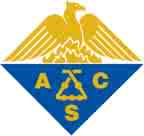

Department of Chemistry, SUNY-Potsdam Slide 1 2 3 4 5 6 7 8 9 10
Presented at:
<<< >>>The National Meeting of the American Chemical Society
Boston, MA, August 19-23, 2007


Maria Hepel and Matthew Fayette, Department of Chemistry, State University of New York at Potsdam, 44 Pierrepont Ave., Potsdam, NY 13676, Fax: 315-267-3170, hepelmr@potsdam.edu
Abstract. Modeling of the cooperative surface diffusion of COad intermediate in methanol oxidation reaction, described recently for small cluster catalysts formed on TiO2 nanoring substrates coated with bimetallic catalysts, has been extended to include cluster catalysts deposited on metal substrates, with the aim to investigate the skin effects observed experimentally for nanoparticle alloys and to explore new nanostructured catalytic materials offering high activity and low poisoning rate. Using quantum mechanical calculations, the energy barriers for surface diffusion have been evaluated and compared with those obtained for TiO2 nanoring and WO3 supports. The results of calculations indicate on the minimum adsorption energy change for COad from 2-fold sites to atop sites on a Pt monolayer catalyst due to the strong effect of catalyst-support interactions and attributed to the changes in near-Fermi level LDOS. The 2D lattice expansion and contraction associated with interactions with adsorbates, as well as other ligand effects will be discussed in detail.